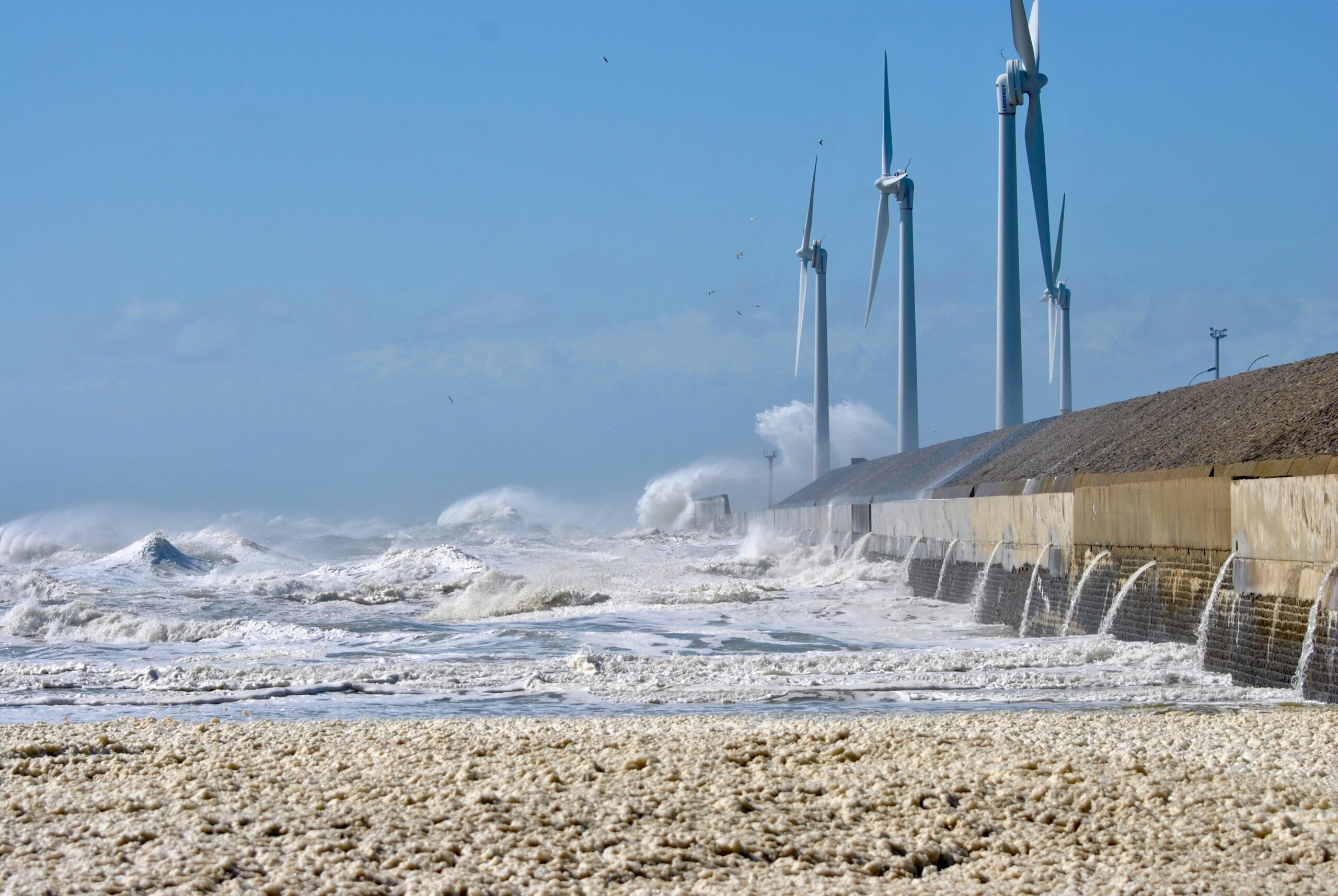Photo by Ilona Froehlich
Climate change is amplifying extreme wind speeds across the world’s oceans, threatening the resilience of offshore wind energy systems that are crucial to the global transition to renewable energy, according to new research.
A study published in Nature Communications found that more than 40% of both commissioned and planned offshore wind farms in Asia and Europe have encountered wind speeds exceeding the design threshold of Class III turbines, which are built to withstand winds up to 37.5 metres per second.
Researchers led by Yanan Zhao and Zhenzhong Zeng from China’s Southern University of Science and Technology analysed hourly wind speed data at 100 metres above sea level from 1940 to 2023, revealing a significant global increase in extreme wind speeds of 0.016 metres per second per year, with upward trends evident in 62.85% of coastal regions.
More than half of these wind farms are situated in regions with increasing extreme wind trends, a pattern strongly associated with changes in tropical and extratropical cyclone activity under global warming.
Co-author Yiheng Tao of The World Bank told Gizmodo: “Offshore wind projects are being developed in regions where extreme wind speeds are intensifying. As countries scale up offshore wind to meet climate and energy goals, integrating climate-resilience metrics into design standards and site selection will be essential to ensure long-term reliability.”
Researchers found that extreme wind speeds increased in approximately 63% of oceanic coastal regions, often associated with weather system changes under global warming. Extreme winds, especially from tropical and extratropical cyclones, are the leading cause of wind turbine failure.
Zhao told Haaretz that more robust technology already exists: “There is a higher level wind turbine called a typhoon-resistant wind turbine with reference wind speed exceeding 57 m/s, which is the most robust and, correspondingly, the most expensive.”
However, Zhao explained the chief concern is structural safety: “So far, we still think the extreme wind will cause huge risk in the safety of wind farms, not only the maximum wind speed, but also the high turbulence, high gust wind and high wind shear.”
The authors call for improved risk modelling, revised design standards, more robust turbine engineering, and new siting parameters, stating these measures “will be essential to safeguard offshore wind infrastructure and support its long-term expansion.”
Prof Chris Vogel, associate professor at the University of Oxford, noted that whilst the study focuses on Class III turbines, many recent offshore wind turbines are rated as Class I with higher maximum wind speed capacity. However, he confirmed: “The general point however that offshore turbines are subjected to high wind speeds, and that they are more exposed as they grow taller, is correct and one of the engineering challenges associated with building larger and larger turbines.”
